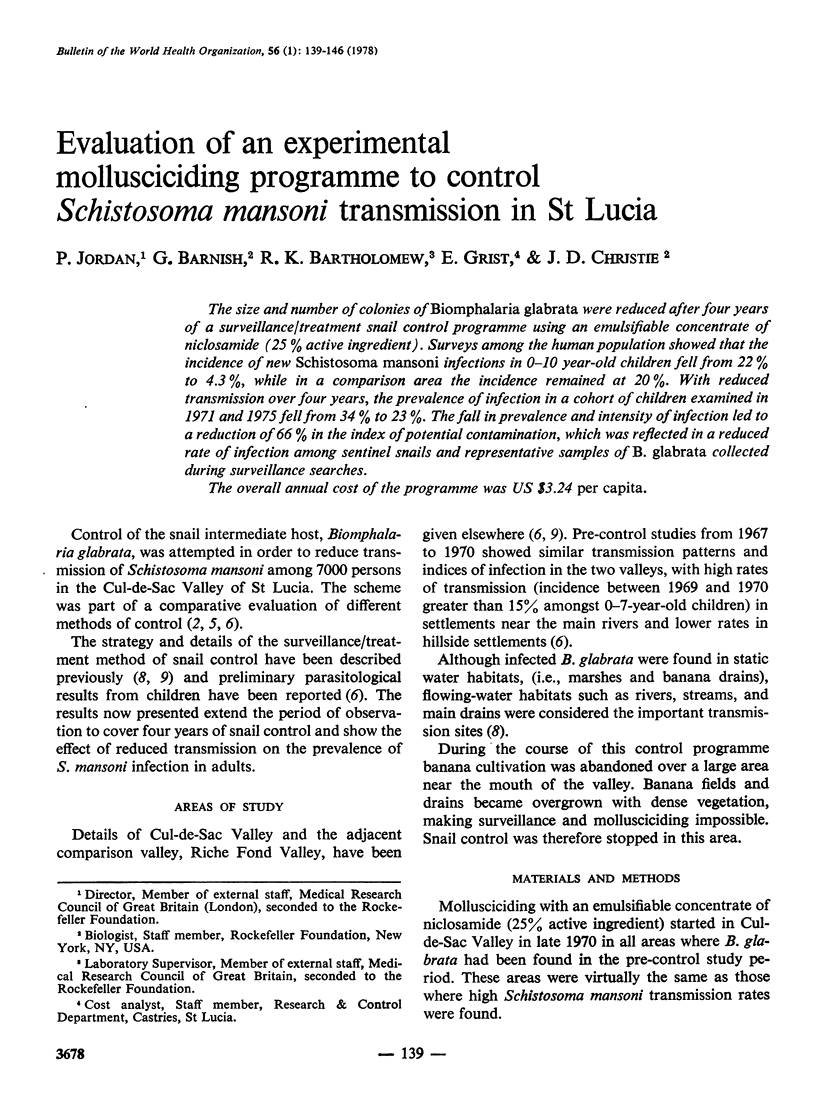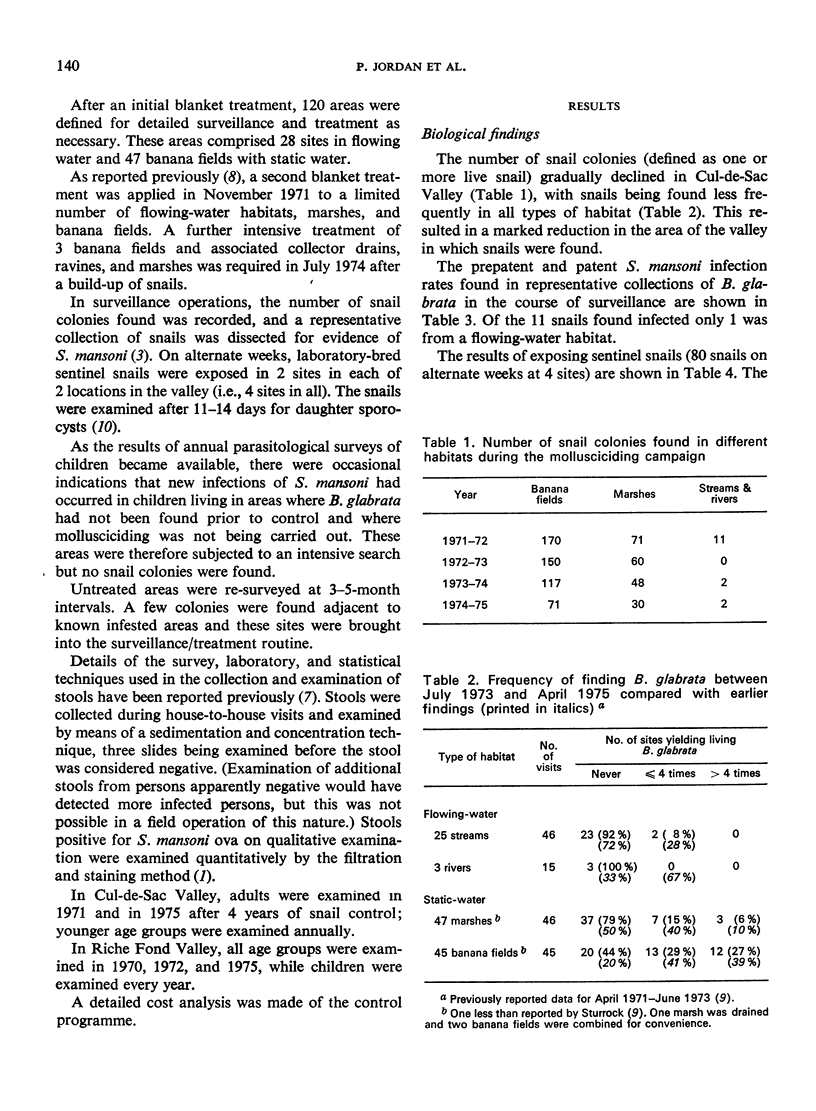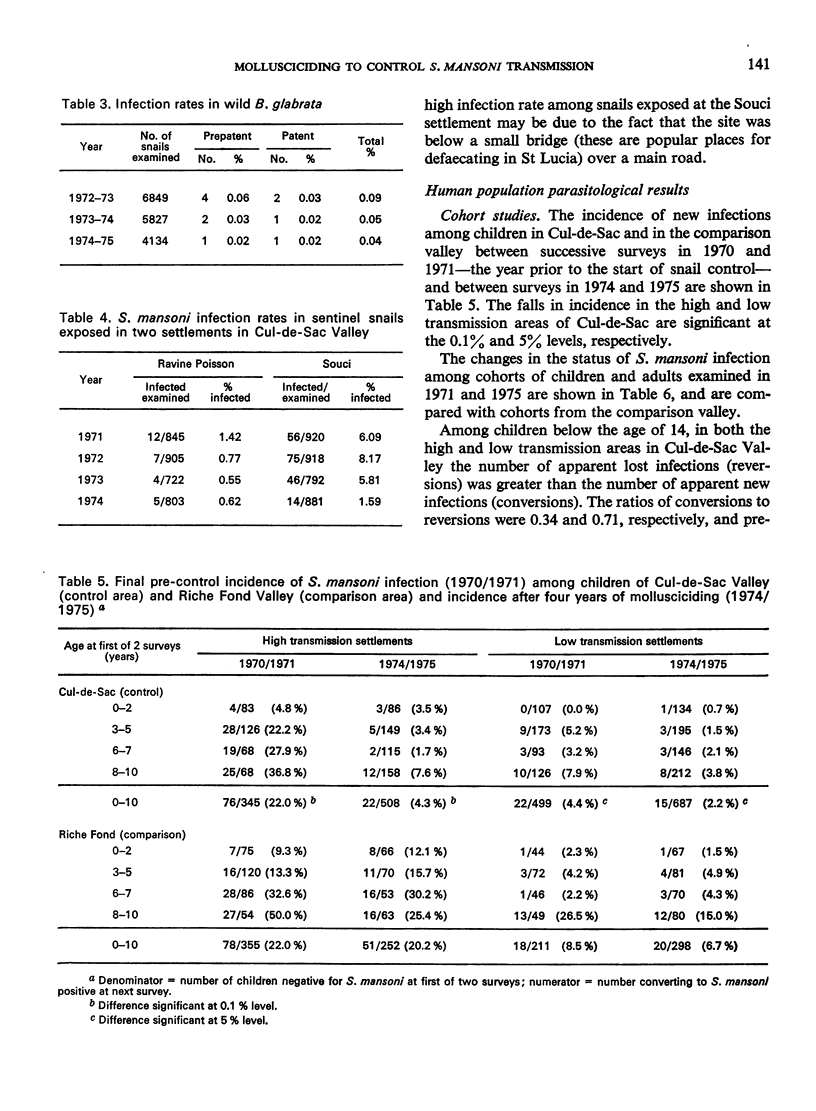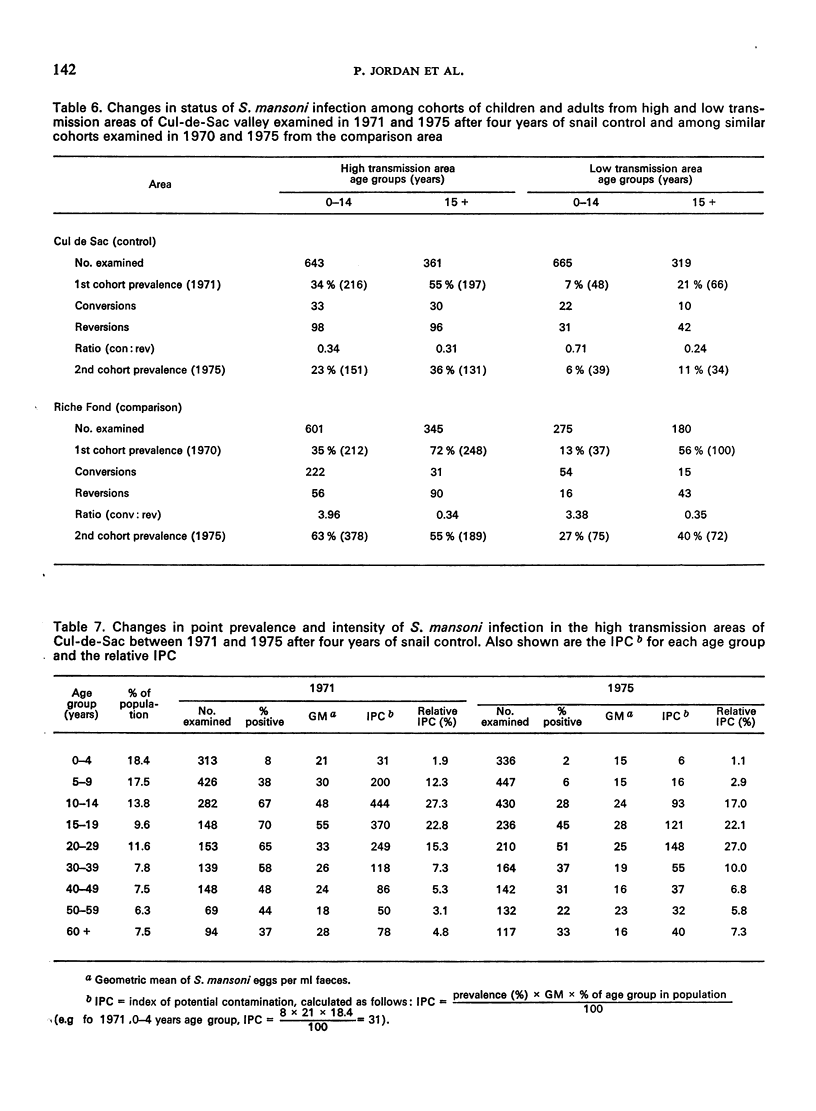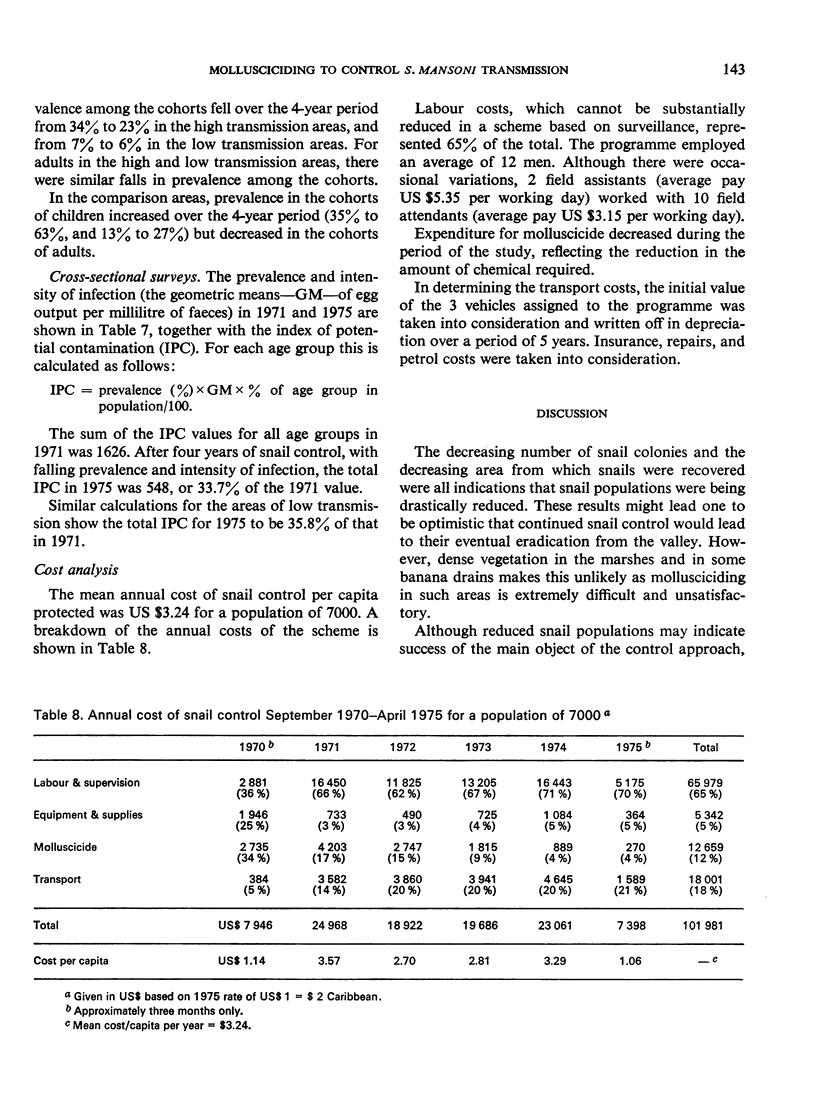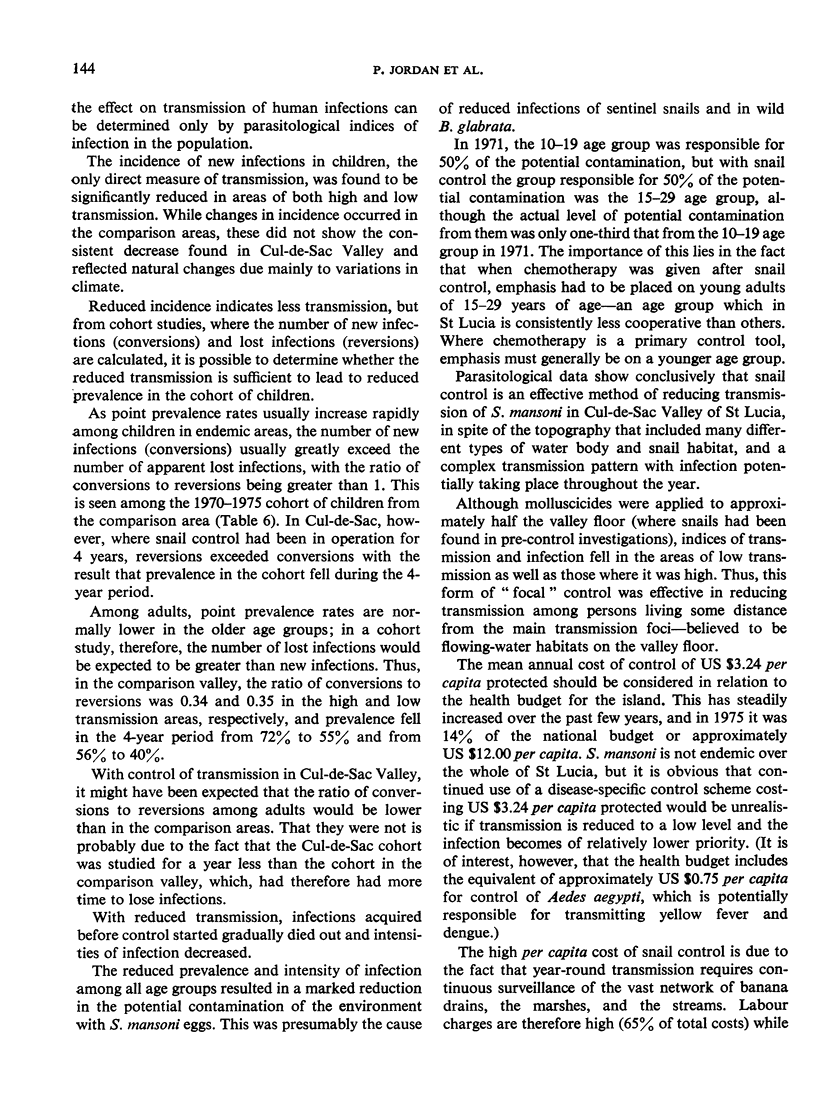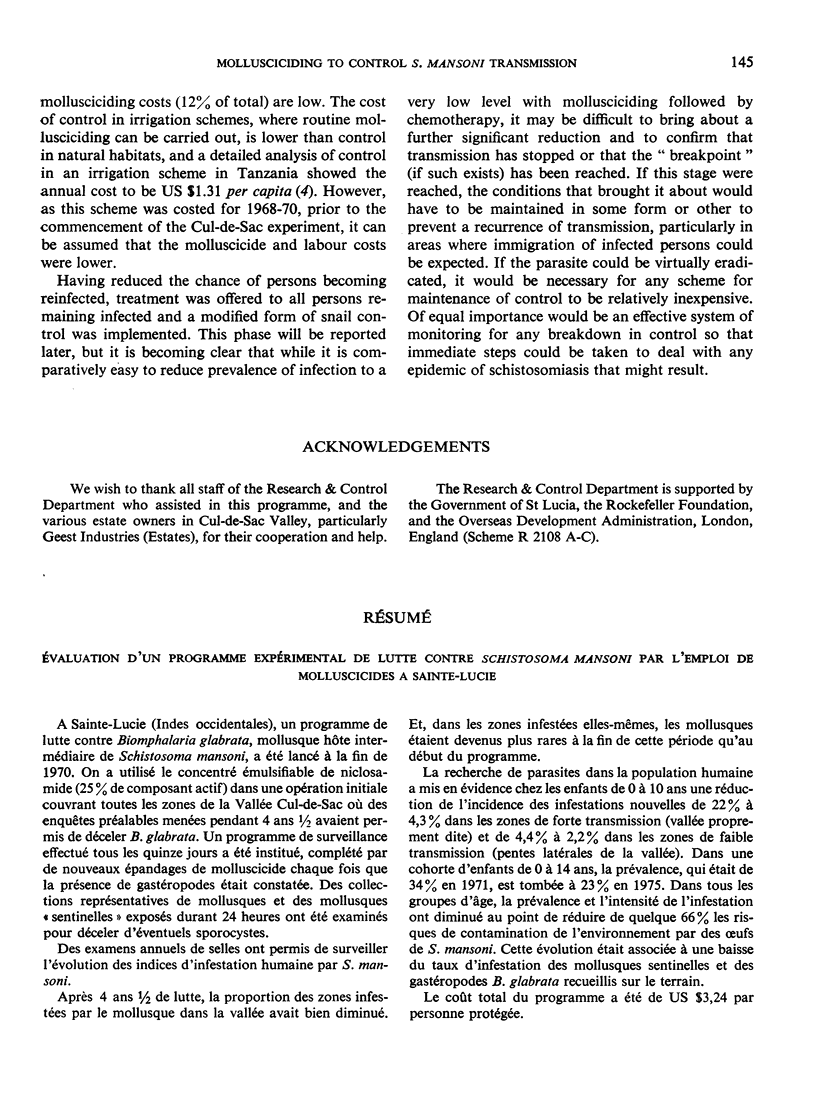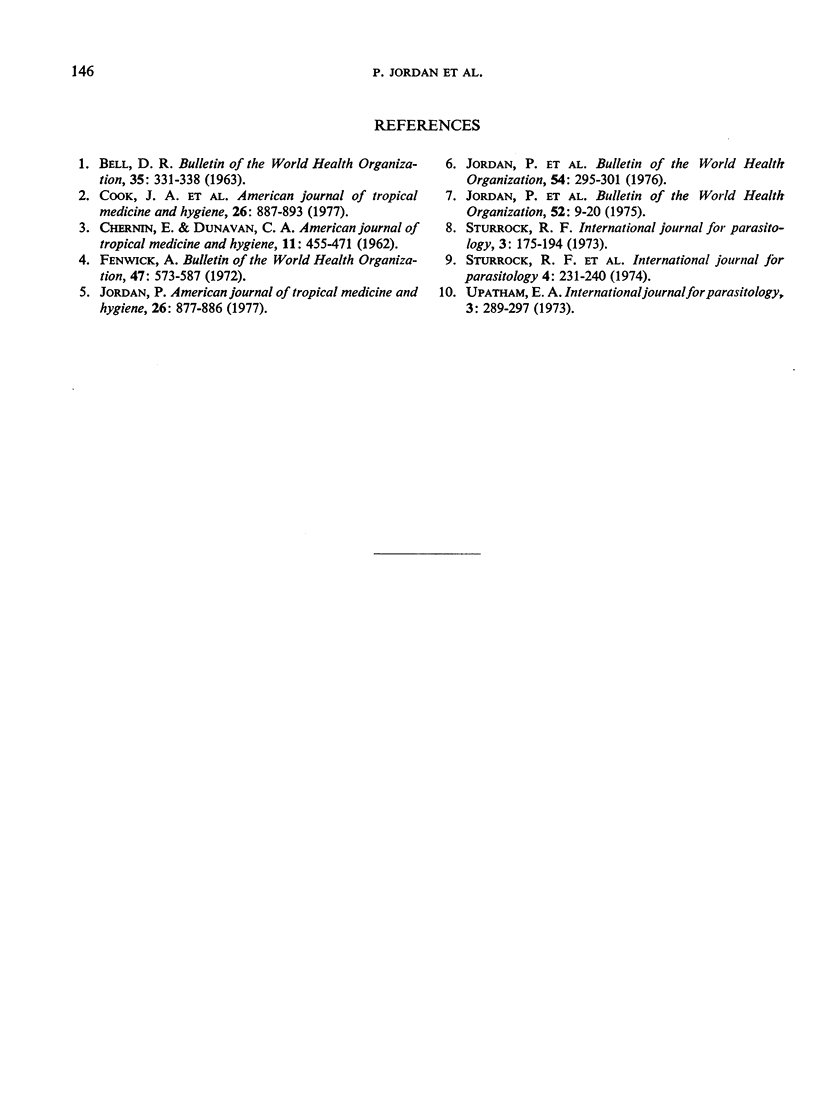Abstract
The size and number of colonies of Biomphalaria glabrata were reduced after four years of a surveillance/treatment snail control programme using an emulsifiable concentrate of niclosamide (25% active ingredient). Surveys among the human population showed that the incidence of new Schistosoma mansoni infections in 0-10 year-old children fell from 22% to 4.3%, while in a comparison area the incidence remained at 20%. With reduced transmission over four years, the prevalence of infection in a cohort of children examined in 1971 and 1975 fell from 34% to 23%. The fall in prevalence and intensity of infection led to a reduction of 66% in the index of potential contamination, which was reflected in a reduced rate of infection among sentinel snails and representative samples of B. glabrata collected during surveillance searches.
The overall annual cost of the programme was US $3.24 per capita.
Full text
PDF